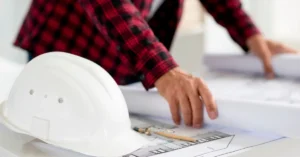
The Psychology of Space: How Architecture Affects Our Well-being
- The design of our built environment has a profound impact on our mental and emotional well-being. From the color of the walls to the shape of the ceiling, every aspect of architectural design can influence our mood, behavior, and overall sense of comfort and security. In recent years, the field of architectural psychology has emerged as a new area of research, focusing on the intersection of architecture and human psychology. Through this research, we are beginning to understand how the design of our living and working spaces can have a significant impact on our mental and emotional health.
- One of the key elements of architectural psychology is color. Color can evoke different emotions and moods, and it is widely used in architecture to create specific atmospheres or to enhance the overall aesthetic appeal of a space. For example, blue is often used in healthcare facilities to promote a sense of calmness and relaxation, while yellow is often used in schools to promote creativity and energy. In residential spaces, warm colors such as orange and red can create a cozy and inviting atmosphere, while cool colors such as green and blue can create a sense of tranquility and relaxation.
- Lighting is another essential element of architectural design that can impact our well-being. Natural light is known to have many health benefits, including improving mood, boosting energy levels, and reducing stress. In contrast, harsh artificial lighting can cause eye strain, headaches, and even disrupt our sleep patterns. By incorporating natural light and using soft, warm lighting in our living and working spaces, we can create a more comfortable and inviting atmosphere that promotes health and well-being.
- The layout of a space can also impact our well-being. The arrangement of furniture and the flow of traffic can affect our sense of comfort and ease of movement. An open floor plan, for example, can create a sense of spaciousness and promote social interaction, while a closed-off layout can create a sense of privacy and tranquility. Additionally, the placement of windows and doors can affect our connection to the outside world and provide us with a sense of connection to nature and the surrounding environment.
- The materials used in architectural design can also have an impact on our mental and emotional health. Natural materials such as wood and stone can create a sense of warmth and comfort, while synthetic materials such as plastic and metal can create a cold and sterile environment. The texture and pattern of materials can also impact our sensory experiences and evoke different emotions and moods. Incorporating plants and other natural elements into our living and working spaces can also improve our sense of well-being by providing a connection to nature and reducing stress levels.
- Productivity and happiness are also influenced by the design of our built environment. A well-designed workspace can promote productivity and creativity, while a poorly designed space can cause stress, fatigue, and burnout. Ergonomic design elements, such as comfortable chairs and adjustable workstations, can reduce physical strain and improve our posture, leading to increased productivity and reduced absenteeism. Additionally, incorporating elements of biophilic design, such as natural light, greenery, and views of nature, can improve our cognitive function and overall mood, leading to increased creativity and job satisfaction.
Conclusion
In conclusion, the design of our built environment has a significant impact on our mental and emotional well-being and quality of life. By incorporating the principles of architectural psychology into our living and working spaces, we can create spaces that promote health, happiness, and productivity. Whether it is through the use of color, lighting, layout, materials, or ergonomic design elements, every aspect of architectural design has the potential to positively impact our well-being.
Architects and designers have a responsibility to create spaces that are not only functional and aesthetically pleasing but also promote the health and well-being of those who inhabit them. By prioritizing the principles of architectural psychology in their designs, architects can create spaces that are not only visually appealing but also contribute to the overall health and happiness of their occupants.
As individuals, we can also make small changes to our living spaces to improve our well-being. Simple changes such as incorporating plants, adjusting lighting, or rearranging furniture can have a significant impact on our mood and overall sense of comfort. By paying attention to the design of our living and working spaces, we can create environments that support our mental and emotional health.
In conclusion, the field of architectural psychology highlights the critical role that architecture plays in promoting our well-being. By understanding the impact that design elements such as color, lighting, layout, and materials have on our mental and emotional health, architects and designers can create spaces that contribute to our overall quality of life. By prioritizing the principles of architectural psychology in our living and working spaces, we can create environments that promote health, happiness, and productivity.
For more SketchUp tutorials you can check out https://www.sketchupguru.com/blog/
You can also check more tutorial videos for sketchup on our YouTube Channel,
https://www.youtube.com/c/SketchupGuru
To know about the Top Online 3D Rendering Courses for 2022 click,













